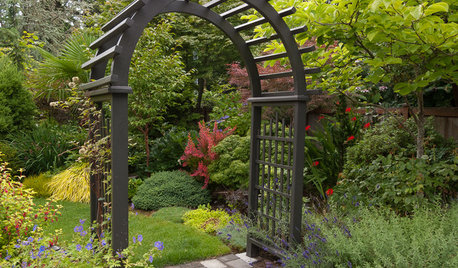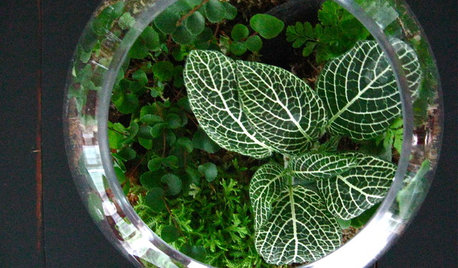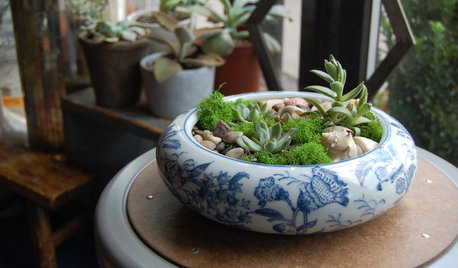charcoal soil ammendment
16 years ago
Related Stories

GARDENING GUIDESGardening Solutions for Heavy Clay Soils
What’s a gardener to do with soil that’s easily compacted and has poor drainage? Find out here
Full Story
GARDENING GUIDESHow to Stop Worrying and Start Loving Clay Soil
Clay has many more benefits than you might imagine
Full Story
GARDENING GUIDESGet on a Composting Kick (Hello, Free Fertilizer!)
Quit shelling out for pricey substitutes that aren’t even as good. Here’s how to give your soil the best while lightening your trash load
Full Story
PLANTING IDEASGreat Garden Combo: 9 Plants for an Intriguing Entrance
Layer trees, flowers and shrubs around an archway to create the feeling of a year-round doorway to adventure
Full Story
LANDSCAPE DESIGNGarden Walls: Mortared Stone Adds Structure, Style and Permanence
Learn the pros and cons of using wet-laid stone walls in your landscape
Full Story
HOUSEPLANTSGardens Under Glass: How to Make Your Own Terrarium
Be the master of a mini ecosystem indoors — the low-maintenance, highly rewarding kind that fits any room
Full Story
COLOR11 Reasons to Paint Your Ceiling Black
Mask flaws, trick the eye, create drama ... a black ceiling solves a host of design dilemmas while looking smashing
Full Story
GARDENING GUIDESWhat Are Your Spring Gardening Plans?
Tearing out the lawn? Planting edibles? Starting from scratch? Tell us what you plan to change in your garden this year
Full Story
DIY PROJECTSQuick DIY Project: 3 Ways to Show Off Your Succulents
Create a simple yet lush vignette with a few plants and some everyday items
Full Story



Kimmsr
dchall_san_antonio
Related Discussions
Ammending my soil for blueberries w. Sawdust
Q
soil ammending/
Q
Last minute soil ammendment
Q
Ammending feral soil
Q
pagardnerOriginal Author
madmagic
Kimmsr
nandina
Kimmsr
madmagic
pls8xx
madmagic
bryan99
gonebananas_gw
led_zep_rules
pagardnerOriginal Author
bryan99
paleorthid
pagardnerOriginal Author
justaguy2
paleorthid
julysun
takadi
pagardnerOriginal Author
wayne_5 zone 6a Central Indiana
rock_star
takadi
citysoil
mackel_in_dfw
Ferren
Masbustelo
TheMasterGardener1
maplerbirch
TheMasterGardener1
maplerbirch
Kimmsr
Masbustelo
TheMasterGardener1
maplerbirch
Cardioprimadona